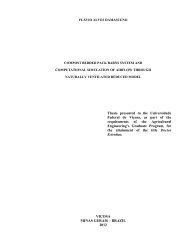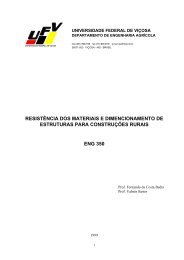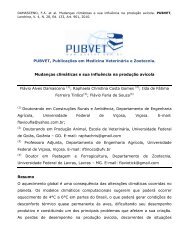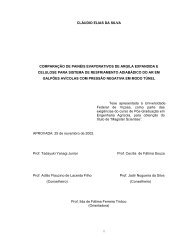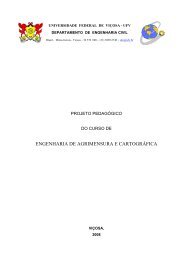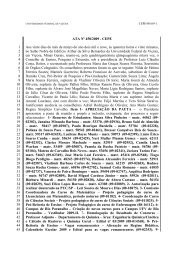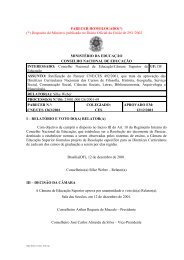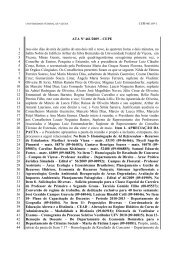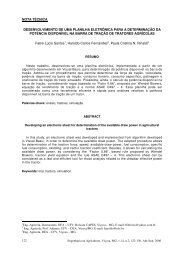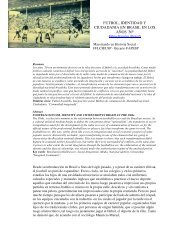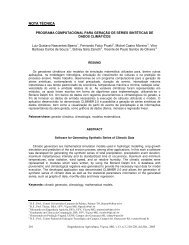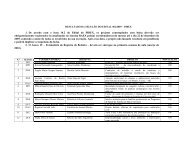ALKALOID BIOSYNTHESIS IN PLANTS: Biochemistry, Cell ... - UFV
ALKALOID BIOSYNTHESIS IN PLANTS: Biochemistry, Cell ... - UFV
ALKALOID BIOSYNTHESIS IN PLANTS: Biochemistry, Cell ... - UFV
You also want an ePaper? Increase the reach of your titles
YUMPU automatically turns print PDFs into web optimized ePapers that Google loves.
48 FACCH<strong>IN</strong>I<br />
in the activation of secondary metabolism and other defense mechanisms by environmental<br />
signals (61, 115). Treatment of C. roseus seedlings with methyl jasmonate<br />
(MeJA) caused an increase in TDC, STR, D4H, and DAT activity levels and<br />
enhanced the accumulation of vindoline (2). TDC and STR transcript levels were<br />
also induced in C. roseus cell cultures by MeJA or the JA precursor α-linolenic<br />
acid (110). An inhibitor of JA biosynthesis, diethyldithiocarbamic acid, blocked<br />
the elicitor-induced formation of JA and the activation of TDC and STR. Moreover,<br />
elicitor-induced JA biosynthesis and MeJA-induced TDC and STR expression<br />
were blocked by the protein kinase inhibitor K-252a, suggesting the involvement<br />
of protein phosphorylation in the transduction pathway. The JA-mediated induction<br />
of TDC and D4H in C. roseus seedlings was shown to involve transcriptional<br />
and posttranslational controls (176). For example, MeJA treatment activated TDC<br />
gene expression and appeared to increase the stability of the TDC protein, but did<br />
not result in higher TDC activity in light- and dark-grown seedlings. Similarly,<br />
exogenous MeJA resulted in higher D4H activity and protein levels, but only in<br />
light-grown seedlings.<br />
A functional JA-producing octadecanoid pathway is necessary for TIA biosynthesis<br />
by C. roseus cells cultured in an auxin-starved medium (53). Auxin inhibited<br />
TIA accumulation and reduced TDC transcription (58), but alkaloid biosynthesis<br />
could be induced by transferring the cells to an auxin-free medium. Exogenous<br />
MeJA restored the ability of cells grown in the presence of auxin to produce alkaloids<br />
(53). In cells cultured in auxin-free media, MeJA or JA treatment caused<br />
a further increase in alkaloid accumulation, whereas alkaloid production was reduced<br />
in auxin-starved cells treated with octadecanoid pathway inhibitors. These<br />
results suggest that JA is produced in response to auxin depletion and function in<br />
coordinating biochemical events that lead to alkaloid biosynthesis. Although JA<br />
is clearly involved in linking physiological and environmental signals to alkaloid<br />
biosynthesis, JA treatment of etiolated seedlings did not enhance TDC activity,<br />
nor could it replace the light requirement for D4H expression (176). JA appears to<br />
modulate events in TIA biosynthesis already under the control of other regulatory<br />
mechanisms.<br />
Leaf damage caused by herbivores increases JA and nicotine levels in Nicotiana<br />
sylvestris roots (7). Exogenous MeJA also induced nicotine production in roots,<br />
suggesting that JA functions in transferring the damage signal from the shoot<br />
to the root. MeJA also induced ODC, PMT, and S-adenosylmethionine synthase<br />
(SAMS) transcript levels, and the accumulation of putrescine, N-methylputrescine,<br />
and nicotine in tobacco cell cultures (74). However, the induction of SAMS and<br />
PMT gene expression by MeJA was blocked by cycloheximide, whereas ODC<br />
expression was not, suggesting that multiple regulatory mechanisms are involved<br />
in the MeJA-mediated control of nicotine biosynthetic genes.<br />
<strong>Cell</strong> cultures of many Papaveraceae species accumulate benzophenanthridine<br />
alkaloids, such as macarpine and/or sanguinarine, in response to treatment with<br />
fungal elicitors (36, 95, 153). In general, the membrane-associated biosynthetic<br />
enzymes are induced by elicitors, whereas most cytosolic enzymes are not (14).



